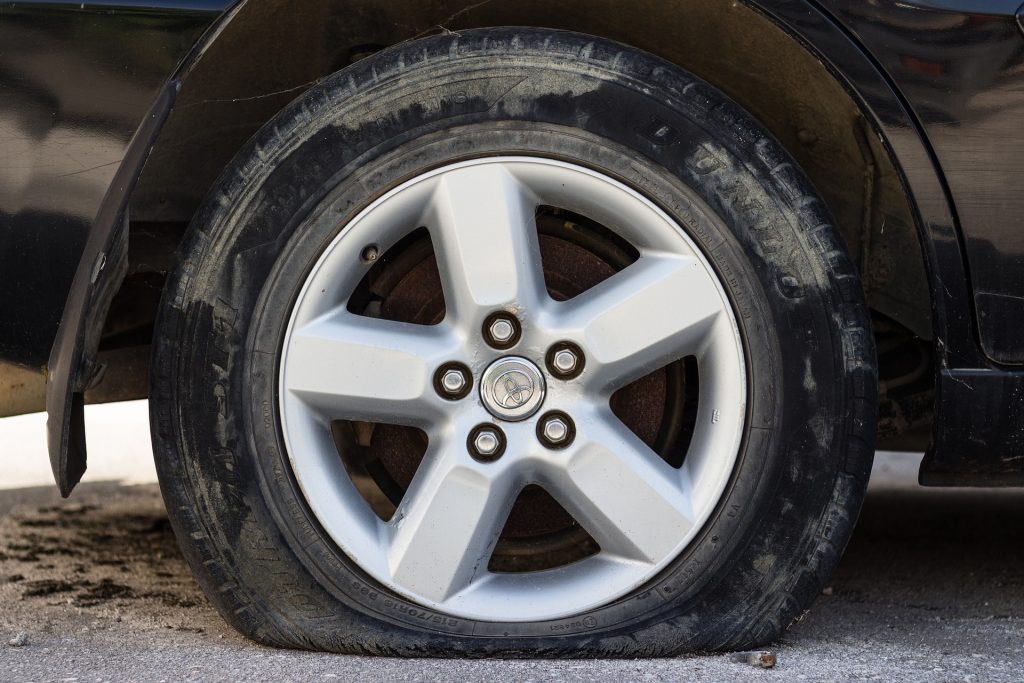
When peacefully driving along in Salem, VA, have you suddenly heard the dreaded thump and flapping of a flat tire? If you’ve never changed a tire before, there’s no need to panic. Here’s how to change a tire in ten simple steps. And if you’d like to be shown how it’s done in person, or learn more car maintenance tips, you can always ask at your local dealership.
Before you begin, you’ll need certain tools: a jack, a lug wrench, a well-inflated spare tire, and your vehicle owner’s manual. It might also help to have a small two-by-six-inch section of wood and wheel wedges. And not all flat tires occur on warm sunny days, so it’s also advisable to carry a rain poncho, a flashlight, and gloves for help in potentially dark, wet, cold conditions.
To prepare for your tire change, make sure your car is safely away from the road on a flat patch of ground with the parking brake on. It’s best to turn on your hazard lights to make sure that other drivers notice you. If you have wheel wedges, apply them as extra insurance to prevent your car from rolling. And then you’re ready to begin.
1. Take Off the Hubcap
To access the lug nuts on the wheel that needs changing, you might need to remove the hubcap. You can usually use your lug wrench to do this. If you need another tool, check the recommended method in your owner’s manual.
2. Use the Wrench To Loosen the Lug Nuts
Using the wrench, move each lug nut through a single halfway turn. If they’re a little stuck, this might require some force.
Don’t take the lug nuts all the way off at this stage. Just make sure they’re loose enough to easily remove later.
3. Use the Jack to Raise Your Car
Carefully place the jack under the area recommended in your owner’s manual. Usually, this is under a sturdy steel section directly beside the wheel. Then use the jack to raise the car until the flat tire is about six inches above the ground.
For additional safety, you can first put the small section of wood under the jack to help it keep its balance throughout the procedure. Also, never allow any part of your body to go under the car in case the jack slips out of position.
4. Remove the Loosened Lug Nuts
Now take off the lug nuts. As they’re already loosened, this should be easy enough. Keep the lug nuts somewhere close to your hand where you won’t lose them.
5. Take Off the Flat Tire
Grip the tire firmly, and carefully pull it towards you. When it’s completely free of the lug bolts, place it safely on the ground nearby.
6. Install the Spare Tire
Line the new tire up with the lug bolts, and slide it into place. Make sure the lug bolts are showing through.
7. Partially Tighten the Lug Nuts
Begin to tighten the lug nuts using your hand alone. Don’t tighten them fully at this stage as this might misalign the wheel.
8. Lower the Car and Further Tighten the Lug Nuts
Gently lower the car until the wheel is only just touching the ground but not all the way. Then tighten the lug nuts in an incremental way, giving each nut one turn of the wrench before moving on to the next one.
This method helps to keep the wheel even. Keep going until they’re almost fully tightened.
9. Fully Lower the Car
Lower the car fully to the ground and stow the jack. You can now use the wrench to complete tightening the lug nuts.
10. Put the Hubcap Back On
Replace the hubcap. Remove the wheel wedges if you used them, and your new wheel should now be good to go.
Ask Your Local Technician for More Car Maintenance Tips
As with many emergency procedures, it’s best to learn how to carry out a tire change before the need arises. If you would like to learn this essential skill, nothing beats an in-person demonstration. You can always ask at your local GMC dealership.
Visit Hart Motors GMC today to ask about changing tires or anything else related to cars. We’re a local full-service dealership with an excellent range of vehicles and helpful, knowledgeable staff.




